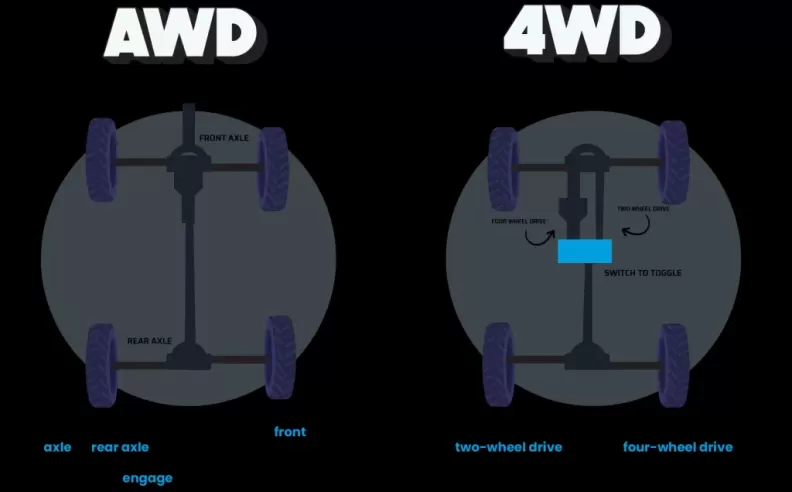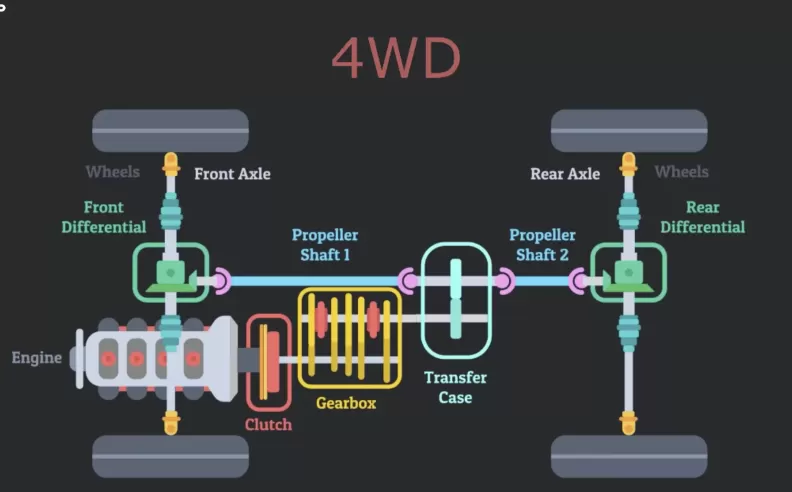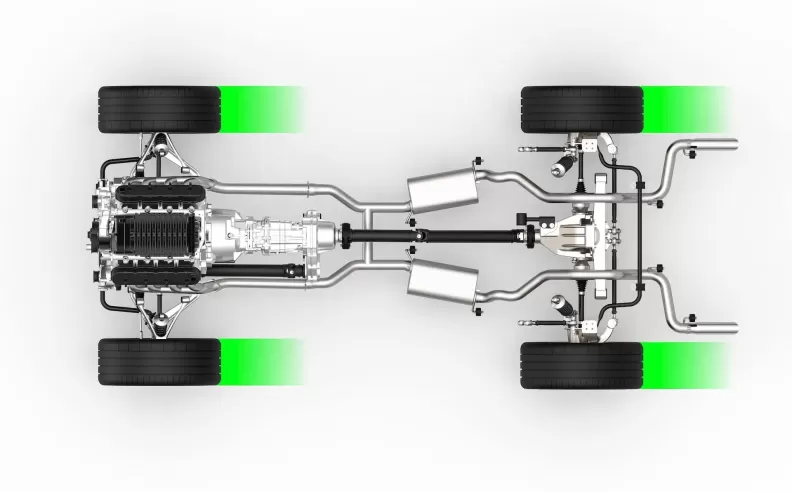
In the world of automotive technology, the terms "Four-Wheel Drive" (4WD) and "All-Wheel Drive" (AWD) are often tossed around, but many drivers remain uncertain about the distinctions between these two drivetrain systems. Both 4WD and AWD offer improved traction and control, but they serve different purposes and are designed for various driving conditions. In this article, we'll delve into the differences between Four-Wheel Drive and All-Wheel Drive systems to help you understand which one might be the better choice for your specific needs.

Four-Wheel Drive, commonly abbreviated as 4WD, is a drivetrain system designed to provide power to all four wheels of a vehicle simultaneously. This system is commonly found in trucks and off-road vehicles and is known for its capability to tackle challenging terrain, such as mud, snow, sand, and rocky trails.
Key features of 4WD systems include:
Selectable vs. Full-Time: 4WD systems can be either selectable or full-time. Selectable 4WD allows the driver to manually engage or disengage the system, typically by using a lever or a button. Full-time 4WD, on the other hand, provides power to all four wheels at all times.
High and Low Range: Many 4WD systems offer both high and low-range modes. High range is suitable for regular driving conditions, while low range provides added torque and traction for severe off-road situations.
Improved Traction: 4WD excels in situations where one or more wheels are likely to lose traction. By distributing power to all four wheels, it minimizes wheel spin and ensures better control.
Off-Road Capabilities: 4WD is the go-to choice for off-road enthusiasts, as it can handle challenging terrain, steep inclines, and deep mud with ease.

All-Wheel Drive, often abbreviated as AWD, is a more versatile and common drivetrain system. AWD distributes power to all four wheels automatically, without requiring driver intervention. It's commonly found in a wide range of vehicles, including sedans, SUVs, and crossovers.
Key features of AWD systems include:
Automatic Power Distribution: AWD systems are always active, distributing power to the wheels with the most traction. This ensures better stability and control in various road conditions.
On-Road Versatility: AWD is ideal for daily driving, as it provides added stability, especially in wet or slippery conditions. It enhances traction during cornering and acceleration.
No Manual Intervention: AWD systems do not require the driver to engage or disengage anything manually. This convenience makes AWD a great choice for those who want optimal traction without having to think about it.
Limited Off-Road Capabilities: While AWD can handle mild off-road situations and light snow, it is not as rugged as 4WD and may struggle in very challenging off-road environments.
Off-Road Enthusiasts: If you frequently tackle rough terrain, venture off the beaten path, or enjoy serious off-roading, a 4WD system is the way to go. It provides the torque and control necessary for extreme conditions.
Everyday Commuters: For daily commuting and highway driving, AWD offers the convenience and enhanced stability you need. It's ideal for those who encounter diverse weather conditions.
Winter and Snow: AWD is excellent for winter driving on icy or snowy roads, while 4WD with low-range capability can be helpful in deep snow or off-road snow conditions.
Towing and Hauling: If you frequently tow heavy loads or trailers, 4WD provides extra torque and traction for these tasks.
In the Four-Wheel Drive vs. All-Wheel Drive debate, there is no one-size-fits-all answer. The choice between these systems depends on your driving habits, the environments you encounter, and the kind of vehicle you prefer. Understanding the differences between 4WD and AWD will help you make an informed decision and ensure that your vehicle meets your needs. Whether it's conquering rugged trails or simply navigating urban streets, the right drivetrain system can enhance your driving experience.

Wael is an automotive content writer specializes in creating written content for Motor 283. Producing a wide range of content, including blog posts, articles, product descriptions, reviews, and technical guides related to cars, trucks, motorcycles, and other vehicles, with an unprecedented passion for cars, and motorcycles.
